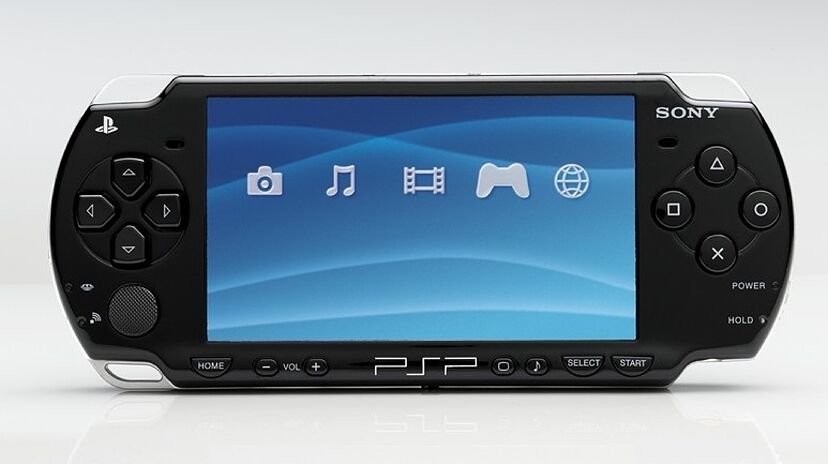**The PlayStation Portable: Revolutionizing Handheld Gaming**

**The PlayStation Portable: Revolutionizing Handheld Gaming**
The PlayStation Portable (PSP), launched by Sony in December 2004 in Japan and March 2005 in North America, marked a significant milestone in the world of handheld gaming. It was Sony's first attempt to bring a home console experience to the portable gaming market, and it did so with remarkable success. This article will explore the journey of the PSP, from its innovative features and game library to its challenges and lasting legacy.
### A Game-Changer in Portable Entertainment
 PS5: A New Era of Console Gaming
PS5: A New Era of Console GamingBefore the PSP, handheld gaming was dominated by Nintendo, whose Game Boy and DS consoles were synonymous with portable play. The PSP, however, sought to redefine what a handheld gaming device could offer. Sony designed the PSP to deliver high-quality graphics, multimedia capabilities, and a vast array of features that went beyond gaming.
One of the most striking aspects of the PSP was its design. The device featured a large 4.3-inch TFT LCD screen, capable of displaying 16.7 million colors, which was unprecedented for a handheld console at the time. This high-resolution display allowed games to be presented in stunning detail, making the PSP a portable powerhouse that was often compared to home consoles like the PlayStation 2.
### The UMD: A New Media Format
 PC Gaming: The Ultimate Platform for Gamers
PC Gaming: The Ultimate Platform for GamersCentral to the PSP's design was the introduction of the Universal Media Disc (UMD), a proprietary optical disc format developed by Sony. The UMD was used to store not only games but also movies and other media content. This made the PSP more than just a gaming device; it was a multimedia player that could fit in your pocket.
The UMD format, while innovative, had its share of challenges. The discs were prone to scratches, and the UMD drive's mechanical nature contributed to the bulk of the device. However, the ability to carry a collection of games and movies on a single handheld device was a novel concept that appealed to many users.
### The PSP’s Multimedia Capabilities
 The New iPhone: A Leap Forward in Mobile Technology
The New iPhone: A Leap Forward in Mobile TechnologySony positioned the PSP as a comprehensive entertainment device, capable of much more than just playing games. It could play music, display photos, and even stream videos from the internet using its Wi-Fi capabilities. The PSP also featured a web browser, allowing users to access websites and stay connected on the go.
The device supported various media formats, including MP3 for music, MP4 for video, and JPEG for photos. Users could store their media on a Memory Stick Duo, which was expandable up to 32GB, providing ample space for a substantial media library. This versatility made the PSP a true multimedia hub, ahead of its time in many respects.
### A Stellar Lineup of Games
 The New iPad: Redefining Productivity and Creativity
The New iPad: Redefining Productivity and CreativityWhile the PSP's multimedia features were impressive, its success ultimately hinged on its game library. Sony ensured that the PSP was supported by a strong lineup of titles, many of which were exclusive to the platform. Games like "Metal Gear Solid: Peace Walker," "Gran Turismo," "Final Fantasy Tactics: The War of the Lions," and "Monster Hunter Freedom Unite" showcased the PSP's ability to deliver rich, immersive experiences.
The PSP's game library was diverse, offering something for everyone. From action-packed shooters to intricate role-playing games, sports simulations to puzzle games, the PSP catered to a wide range of gaming preferences. This diversity was one of the console's greatest strengths, attracting both hardcore gamers and casual players alike.
### The PSP’s Impact on the Industry
The PSP's arrival significantly influenced the handheld gaming landscape. It challenged the notion that portable gaming devices had to be limited in scope and power. The PSP proved that handheld consoles could offer experiences that rivaled home consoles, both in terms of graphics and gameplay depth.
Furthermore, the PSP played a pivotal role in advancing digital distribution in gaming. The PlayStation Store allowed users to download games, demos, and other content directly to their PSPs, reducing the reliance on physical media. This move towards digital distribution was a precursor to the trends we see today, where digital downloads and streaming are commonplace in the gaming industry.
The PSP also fostered a vibrant homebrew community. Enthusiasts developed custom firmware and homebrew applications that extended the device's functionality, allowing it to run emulators, homebrew games, and even Linux. This community kept the PSP relevant long after its official support ended, showcasing the device's versatility and the dedication of its fanbase.
### Challenges and Competition
Despite its many strengths, the PSP faced significant challenges throughout its lifespan. One of the most notable was its battery life. The combination of a large, bright screen and powerful hardware meant that the PSP's battery life was often limited, particularly when running graphically intensive games or using multimedia features.
The UMD format, while innovative, also presented issues. Loading times for games and movies could be lengthy, and the discs themselves were fragile. Additionally, the PSP's relatively high price point made it less accessible to some consumers, particularly when compared to its main competitor, the Nintendo DS.
The Nintendo DS, with its dual-screen setup and touch controls, offered a different kind of gaming experience that appealed to a broader audience. Its lower price point, combined with Nintendo's strong lineup of family-friendly games, helped the DS outsell the PSP by a significant margin. However, the PSP maintained a loyal following among gamers who appreciated its advanced capabilities and more mature game library.
### The PSP’s Enduring Legacy
The PlayStation Portable was officially discontinued by Sony in 2014, marking the end of a significant chapter in gaming history. However, the PSP's legacy lives on. It paved the way for future handheld consoles, most notably the PlayStation Vita, which built on the foundations laid by the PSP with enhanced graphics, more powerful hardware, and an even stronger emphasis on digital content.
The PSP also left an indelible mark on the gaming industry as a whole. It demonstrated that handheld gaming could be sophisticated, immersive, and multifaceted. The device's multimedia capabilities foreshadowed the convergence of gaming and other forms of entertainment that we see in today's smartphones and tablets.
For many gamers, the PSP remains a cherished device, remembered for its groundbreaking design, stellar game library, and the unique experiences it offered. Even in an era dominated by smartphones and tablets, the PSP stands out as a symbol of innovation and ambition in the gaming industry.
### Conclusion
The PlayStation Portable was more than just a handheld gaming console; it was a revolution in portable entertainment. With its powerful hardware, multimedia capabilities, and diverse game library, the PSP set new standards for what a handheld device could achieve. While it faced its share of challenges, the PSP's impact on the gaming industry is undeniable. It will be remembered as a pioneering device that redefined handheld gaming and left a lasting legacy that continues to influence the industry today.
Deja una respuesta